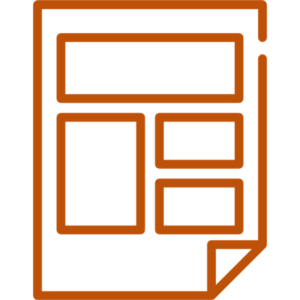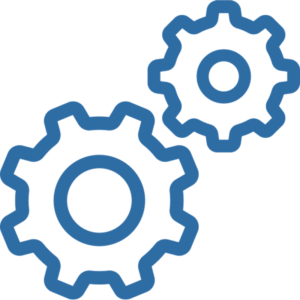 QUICK SUMMARY
QUICK SUMMARY
Behavioral insights are research findings from the behavioral sciences, such as behavioral economics and behavioral psychology, about how people make decisions. By applying those findings to programs, organizations can help tackle priority challenges within their programs and improve results.
 STRATEGY DETAILS
STRATEGY DETAILS
Q1. What are behavioral insights?
Behavioral insights are research findings from the behavioral economics and other behavioral sciences about how people make decisions. When they're applied to programs (in what are often called "nudges") they can help programs better serve participants or residents. Here's an example of a behavioral insight: Behavioral economics researchers have found that losses -- whether real or potential -- are perceived by most people as psychologically or emotionally more severe than an equivalent gain -- a phenomena called loss aversion. For instance, most people get more pain from losing a $100 bill than they do in finding the same amount. That insight can be put to use by public programs and agencies in trying to encourage, say, program participants to take some sort of action, such as signing up for a financial benefit for which they're eligible. By emphasizing the loss in income that they'll miss if they don't sign up, it may work better than emphasizing the gain if they do.
Q2. Why are behavioral insights important for results-focused leaders and their organizations?
The strategy of using behavioral insights is particularly important because it's often low cost, quick to produce results, and focused on practical challenges faced my programs -- all of which are valued by program managers who need to produce results "in real time." More broadly, this strategy is important since it can be a "foot in the door" towards a more experimental, data-driven organizational culture. In other words, behavioral insights projects can help program leaders see that a "test, learn and adapt" mindset (to use a phrase coined by the Behavioral Insights Team) can produce meaningful benefits for programs and the people they serve. That can open the doors to more innovation and improvement efforts, including additional behavioral insights projects.
Q3. Why are applications of behavioral insights sometimes called nudges?
The term "nudge" was made famous by from the book Nudge by Richard Thaler and Cass Sunstein, which highlighted the use of behavioral insights. In their book, they write that a nudge is "any aspect of the choice architecture that alters people’s behavior in a predictable way without forbidding any options or significantly changing their economic incentives. To count as a mere nudge, the intervention must be easy and cheap to avoid. Nudges are not mandates. Putting the fruit at eye level counts as a nudge. Banning junk food does not."
Q4. What's an easy way to remember a useful set of behavioral insights?
A practical and easy-to-remember set of behavioral insights is highlighted in the EAST framework created by the Behavioral Insights Team. EAST stands for Easy, Attractive, Social and Timely. The idea: If you want people (say, program participants or city residents) to take some sort of action (say, getting a flu shot or saving for retirement), you should make that action or decision as easy, attractive, social and timely as possible. For example, you should make it:
- Easy by simplifying messages and by reducing the hassle factor involved;
- Attractive by drawing attention to the decisions;
- Social by showing that most people perform the desired behavior; and
- Timely by promoting people when they are likely to be most receptive.
Q5. What are other examples of behavioral insights?
Along with the concept of loss aversion mentioned above, behavioral researchers have found dozens of common "cognitive biases." Knowing those biases can help programs and agencies better serve participants or constituents. A useful overview of dozens of cognitive biases is presented by The Decision Lab, a research firm, and available here. An example is the concept of framing effects. As they explain, "The framing effect is when our decisions are influenced by the way information is presented. Equivalent information can be more or less attractive depending on what features are highlighted." For example, most people would rather have a surgery presented as having a 90% survival rate versus the same surgery presented as having a 10% mortality rate, even though it's mathematically the same.
Of course, public leaders and managers don't need to know all of the cognitive biases (although they're fun to learn), since they can partner with experts who do know them. In other words, public officials can share with behavioral insights experts particular challenges they're facing as an agency or program and then brainstorm together how behavioral insights might help.
Q6. What are some real-life applications?
There are a growing number of examples, thanks in part to the work of the Office of Evaluation Sciences at the federal level, which has helped federal agencies and offices implement behavioral science projects, as well as the work of the What Works Cities Initiative, which has partnered with the Behavioral Insights Team to help cities implement these types of projects. Examples include:
- The U.S. Department of Education sent personalized text messages over the summer to high school graduates who had been accepted to college, with each student in the sample receiving up to 10 personalized text messages reminding them of the specific tasks they needed to complete before beginning classes in the fall. An evaluation of the effort found that the text messages increased college enrollment by more than 3 percentage points, while being very low cost to implement.
- The U.S. Department of Defense increased the number of service members who enrolled in the federal government’s retirement program by encouraging them to sign up at a “reset” point in their life, as they transferred to a new base. That strategy increased the likelihood of enrollment by more than 8 percentage points.
- The U.S. Department of Agriculture simplified and clarified the letter it used to request income verification from families in the National School Lunch Program, including adding a visual summary of the documents needed and reminding beneficiaries they can take pictures of those documents and submit them by email. The revised letter increased the response rate by an estimated 2.1 percent.
- Syracuse, New York, personalized letters sent to residents who were behind on their property tax bills by including a handwritten note on the front of the envelope. The personalized envelope message boosted overdue tax payments by $1.5 million.
- Chattanooga, Tennessee helped to recruit a more diverse police force by testing different messages on postcards to identify which job advertisement was most effective to increase the number of applications, particularly those from people of different racial and ethnic backgrounds.
- San Jose, California reduced illegal dumping of large trash items such as mattresses, couches and washing machines by launching a program that offered free large-item pickup and disposal. To get the word out, they tested two different postcards (with different messages) advertising the service, helping them determine which message was more effective in encouraging take-up -- and whether the postcard itself was effective, which it was.
Q7. What are some lessons learned from behavioral insights projects?
- The importance of testing (and context): Testing how successful a "nudge" is using a (often-quick) randomized controlled trail -- rather than simply assuming it works -- is usually important. That's because, while there's a growing number of examples where behavioral insights have been effective, context matters. A successful application of a behavioral insight in one policy context or one geographic location may not work as well elsewhere. A good example relates to one of the best-known examples of a nudge -- the addition of language to letters being mailed to people who were late paying their taxes in the U.K., pointing out that most people pay their taxes on time. Yet when the Treasury Department tried the same thing in the U.S., it didn't work. That's because the context was different, including the fact that the letters in the U.S. were sent to people with much longer-standing debts.
- Small changes, but for low cost: Another lesson is that when nudges are successful, they tend to produce small percentage changes in outcomes -- say, a one or two percentage-point gain in the response rate of a letter or decision to sign up for a program. (Nudges are small changes, so that's not unexpected.) That said, those small gains can be valuable. First, the costs of these interventions are usually very low, so the return on investment from even small gains can be high. Second, when nudges are applied in a government context, with large programs, even a small change can mean thousands of people who benefit from the change.
Q8. How do you start using behavioral insights?
One simple way to start is by bringing together program leaders and managers with staff or outside experts who are knowledgeable about behavioral insights. In that conversation, the program officials can answer, "What are some of the most pressing challenges your program faces?" By starting with practical, important program challenges -- and then considering which of those challenges might be ripe for a "nudge" or other application of behavioral insights -- it can get the conversation going in a useful direction quickly. We've also created a template, linked below, to help facilitate a conversation about possible behavioral insights applications.
Q9. What types of challenges faced by public-sector organizations are ripe for this approach?
Not surprisingly, behavioral insights work best when a behavioral obstacle is at the root of a problem. That means it's important to consider the possible causes of a particular challenge an organization is facing to see if a "nudge" strategy might be useful. As Lindsay Moore of the Behavioral Insights Team has explained, the challenges faced by programs can be caused by institutional, situational or behavioral factors: "For example, if fewer low-income people than expected are enrolling in a job training program, the reason could be behavioral. For instance, they might be deterred by a confusing enrollment form. The problem could also be situational, such as limited public transportation near the job training facility. Or it could be institutional, such as income eligibility limits that were set too low, preventing many candidates with slightly higher incomes from participating." She advises that, "One way to diagnose why a program is underperforming, or how it might be improved, is to engage its customers. That could mean holding focus groups, doing structured interviews or observing people as they participate in a program, to identify problem areas and understand the user’s perspective."
Q10. How can organizations apply behavioral insights at low cost?
Many of the applications of behavioral insights to date have focused on communications strategies that, by nature, are often low cost, such as sending out (or revising) letters or text messages. But another way these types of projects can be done at low cost is by relying on administrative data -- i.e., program data already being collected -- to determine the results of the behaviorally-informed intervention. By using already-available data, it makes the research part (answering "did this nudge work?") low cost by avoiding more costly data collection efforts.
 HANDOUTS / TEMPLATES
HANDOUTS / TEMPLATES
- Template: Identifying opportunities for applying behavioral insights (link here).
 ADDITIONAL RESOURCES
ADDITIONAL RESOURCES
- Article: "7 behavioral insights tips from pioneering cities in the field" by Bloomberg Cities via their Medium page. The article provides lessons from implemented projects.
- Report: Behavioral Economics and Social Policy: Designing Innovative Solutions for Programs Supported by the Administration for Children and Families. Although this report focuses on applying behavioral insights to one policy area -- human services -- the lessons carry over to other areas as well, including a very useful discussion (see page ES-2) about the behavioral diagnosis and design process.
- Book: Behavioral Insights, by Michael Hallsworth and Elspeth Kirkman
- Report: A Nudge in the Right Direction: How Understanding Human Behavior Can Lead to More Effective Government by the Partnership for Public Service and Grant Thornton.
- Gov Innovator podcast interviews:
- Launching a behavioral insights community of practice: Melissa Leal, Colorado Department of Public Health and Environment
- Lessons in applying behavioral insights to human services from the Behavioral Interventions to Advance Self-Sufficiency (BIAS) project: Lashawn Richburg-Hayes and Nadine Deshausay, MDRC
- Applying behavioral insights through the EAST (Easy, Attractive, Social, Timely) framework: Simon Ruda, U.K. Behavioral Insights Team
- Using behavior insights to improve government performance: Maya Shankar, White House Social and Behavioral Science Team
- Improving public policy through behavioral economics: Raj Chetty, Harvard University
- Improving education outcomes with innovative low-cost interventions, such as texting: Ben Castleman, University of Virginia
- Applying insights from behavioral economics to improve social service outcomes: Emily Schmitt, U.S. Department of Health and Human Services
- Testing whether text messages improve the effectiveness of communication with citizens: Donald Green, Columbia University
 CUSTOMIZED ASSISTANCE
CUSTOMIZED ASSISTANCE
Please contact us if your organization needs help in using behavioral insights to tackle priority challenges.
![]() PDF HANDOUT VERSION OF THIS PAGE (link here)
PDF HANDOUT VERSION OF THIS PAGE (link here)
